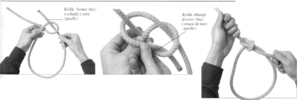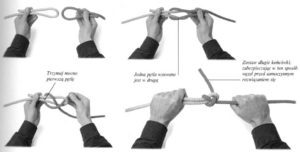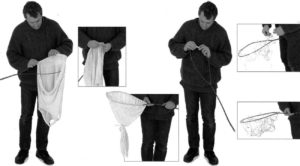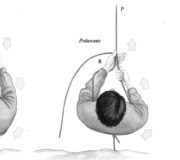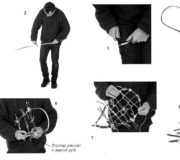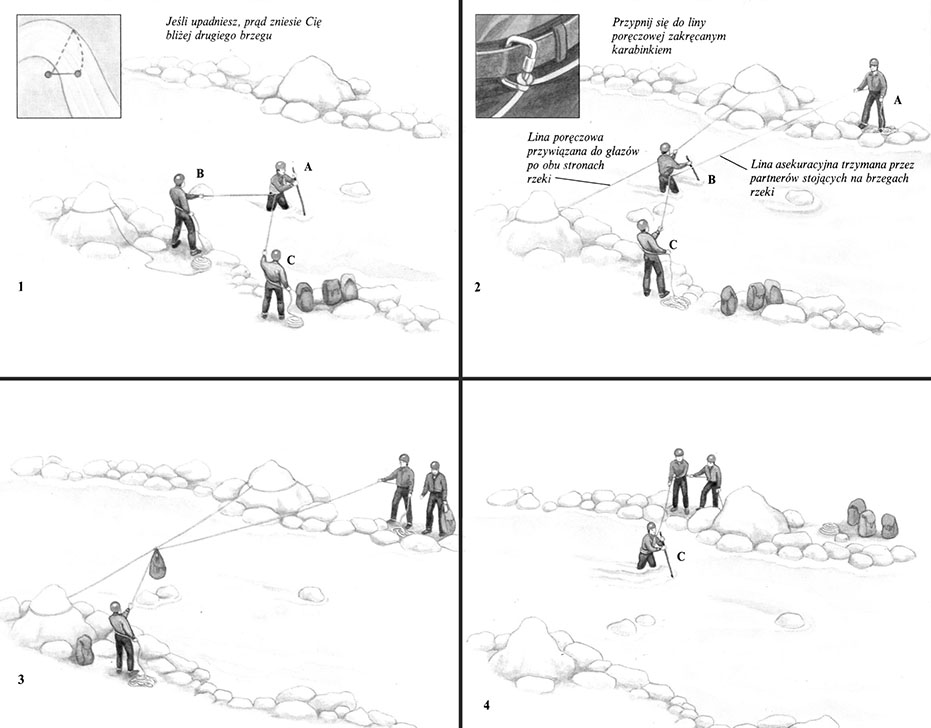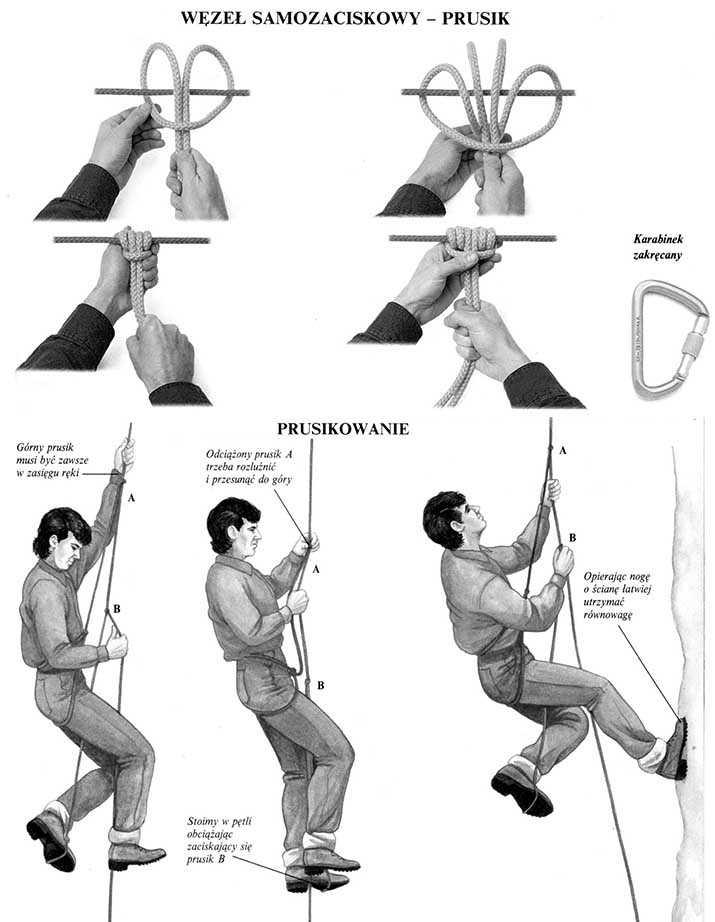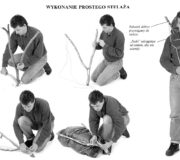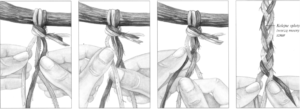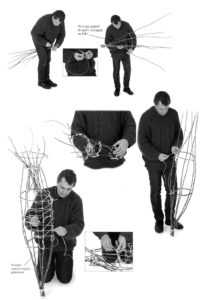Podstawowe węzły
1 Wiążąc węzeł płaski zacznij od przełożenia prawego końca liny nad i pod lewym końcem.
2 Następnie lewy koniec przepleć pod i nad prawym, trzymając mocno oba końce, jak to widać na zdjęciu.
3 Ściągnij węzeł pociągając za oba końce w przeciwnych kierunkach. Taki węzeł można wiązać także w odwrotną stronę. Pamiętaj, by zawsze za drugim razem przekładać nie ten koniec, od którego się zaczęło.
1 Węzeł ten pozwala utworzyć z liny pętlę, która ani się nie rozwiąże, ani nie zaciśnie. Najpierw trzeba zrobić na linie małą pętelkę, a następnie jak w powiedzeniu: „wyszedł z nory królik, obleciał drzewo dookoła i wrócił do nory”.
2 Koniec liny (królika) tworzący pętlę przekładamy przez pętelkę (norę), następnie przeprowadzamy za liną (drzewem) nad węzłem i z powrotem przetykamy przez pętelkę (norę).
3 Ciągniemy za koniec liny i linę zaciskając węzeł. Ten węzeł często służy do wiązanie się liną w pasie i asekuracji, dlatego warto nauczyć się go wiązać.
1 Węzeł ten pozwala wykonać pętlę, którą można coś opasać, na przykład gałąź, jak umożliwia łączenie ze sobą dwóch lin. Zrób jedną pętlę o średnicy około 60 cm, tak by koniec liny wychodził dołem.
2 Przewiń luźny koniec nad liną i pętelką, a następnie przełóż od dołu przez pętelkę, tak żeby lina utworzyła ósemkę.
3 Pociągnij linę z obu stron, aby zacisnąć węzeł. Otrzymasz w ten sposób najprostszą odmianę ósemki, którą możesz wiązać na końcu liny.
4 Aby zrobić pętlę, luźny koniec liny owiń wokół jakiegoś przedmiotu, a następnie wetknij go z powrotem w ósemkę.
5 Przeciągnij luźny koniec przez ósemkę i zawijając go przełóż z powrotem przez pierwszą pętelkę ósemki.
6 Zaciśnij węzeł ciągnąc z jednej strony za linę, a z drugiej za pętlę. Tego węzła używają często wspinacze do wiązania się liną.

